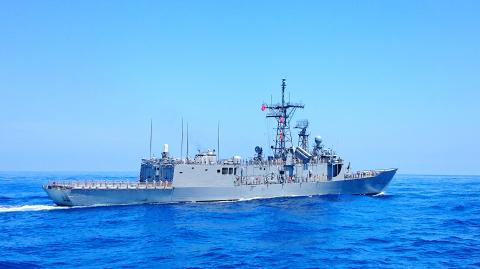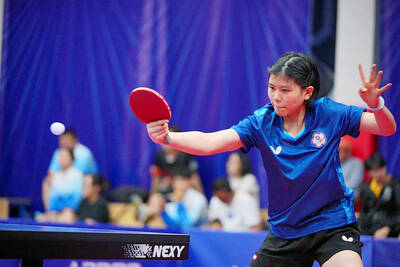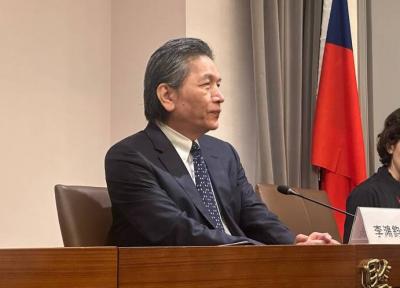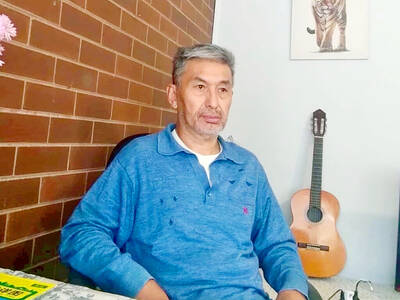The Republic of China Navy’s next-generation frigates are likely to be equipped with an active electronically scanned array (AESA) as well as other weapons, a Ministry of Defense official said.
The combat systems designed by Chungshan Institute of Science and Technology for the frigates are to be the equivalent of and be interoperable with Aegis combat system-equipped US warships, said the ministry official, who wished to remain anonymous.
The navy plans to build six to 10 of the frigates.

Photo: Lo Tien-bin, Taipei Times
Unless the bulk of the AESA radar is reduced by redesigns, the system’s installation on the frigates would increase each vessel’s total displacement from 4,000 tonnes to between 4,500 tonnes and 5,200 tonnes, the official said.
The likely changes to the ship class’ specifications would increase its projected hull length and width from 135m and 15m to 138m and 16.5m respectively, the official said.
Frigate specifications are subject to alterations according to the needs of the navy and the specifications of the equipment designed by the Chungshan Institute, so they will not be completed until late next year, the official said.
The official, who is familiar with the design and procurement process, said the frigate design and purchase plans are divided into phases.
This year and next year the military is to draw up the frigates’ design specs and contract with a projected budget of NT$49.29 million (US$1.64 million), the official said.
A prototype is to be constructed between 2019 and 2021, and its budget is to be determined by the costs of the ship’s detection system and armaments.
After field trials of the prototype, the specifications will be fine-tuned before production starts on the rest of the frigates.
The navy held a conference in Kaohsiung with potential contractors to discuss specification changes, the official said.
As the navy finalizes designs and specifications, two or three more conferences will be held this year to announce them, he said.
Sources have previously said that the navy wants the next-generation frigates to have powerful anti-aircraft and anti-ship capabilities, and they are to be equipped with AESA radars with an effective range of 300km.
The frigates are to be armed with vertical-launch systems capable of firing Tien Kung III anti-aircraft missiles and Hsiung Feng II and Hsiung Feng III anti-ship missiles and 76mm guns.

Taipei has once again made it to the top 100 in Oxford Economics’ Global Cities Index 2025 report, moving up five places from last year to 60. The annual index, which was published last month, evaluated 1,000 of the most populated metropolises based on five indices — economics, human capital, quality of life, environment and governance. New York maintained its top spot this year, placing first in the economics index thanks to the strength of its vibrant financial industry and economic stability. Taipei ranked 263rd in economics, 44th in human capital, 15th in quality of life, 284th for environment and 75th in governance,

The Sports Administration yesterday demanded an apology from the national table tennis association for barring 17-year-old Yeh Yi-tian (葉伊恬) from competing in the upcoming World Table Tennis (WTT) United States Smash tournament in Las Vegas this July. The sports agency said in a statement that the Chinese Taipei Table Tennis Association (CTTTA) must explain to the public why it withdrew Yeh from the WTT tournament in Las Vegas. The sports agency said it contacted the association to express its disapproval of the decision-making process after receiving a complaint from Yeh’s coach, Chuang

Control Yuan Secretary-General Lee Chun-yi (李俊俋) tendered his resignation last night, admitting that he had misused a government vehicle, as reported by media. His resignation was immediately accepted by the Control Yuan. In a statement explaining why he had resigned, Lee apologized for using a Control Yuan vehicle to transport his dog to a pet grooming salon on May 20. The issue first came to light late last month, when TVBS News reported that Lee had instructed his driver to take the dog to the salon. The news channel broadcast photos that it said were taken by an unnamed whistle-blower, which purportedly showed the

A former officer in China’s People’s Liberation Army (PLA) who witnessed the aftermath of the 1989 Tiananmen Square massacre has warned that Taiwan could face a similar fate if China attempts to unify the country by force. Li Xiaoming (李曉明), who was deployed to Beijing as a junior officer during the crackdown, said Taiwanese people should study the massacre carefully, because it offers a glimpse of what Beijing is willing to do to suppress dissent. “What happened in Tiananmen Square could happen in Taiwan too,” Li told CNA in a May 22 interview, ahead of the massacre’s 36th anniversary. “If Taiwanese students or